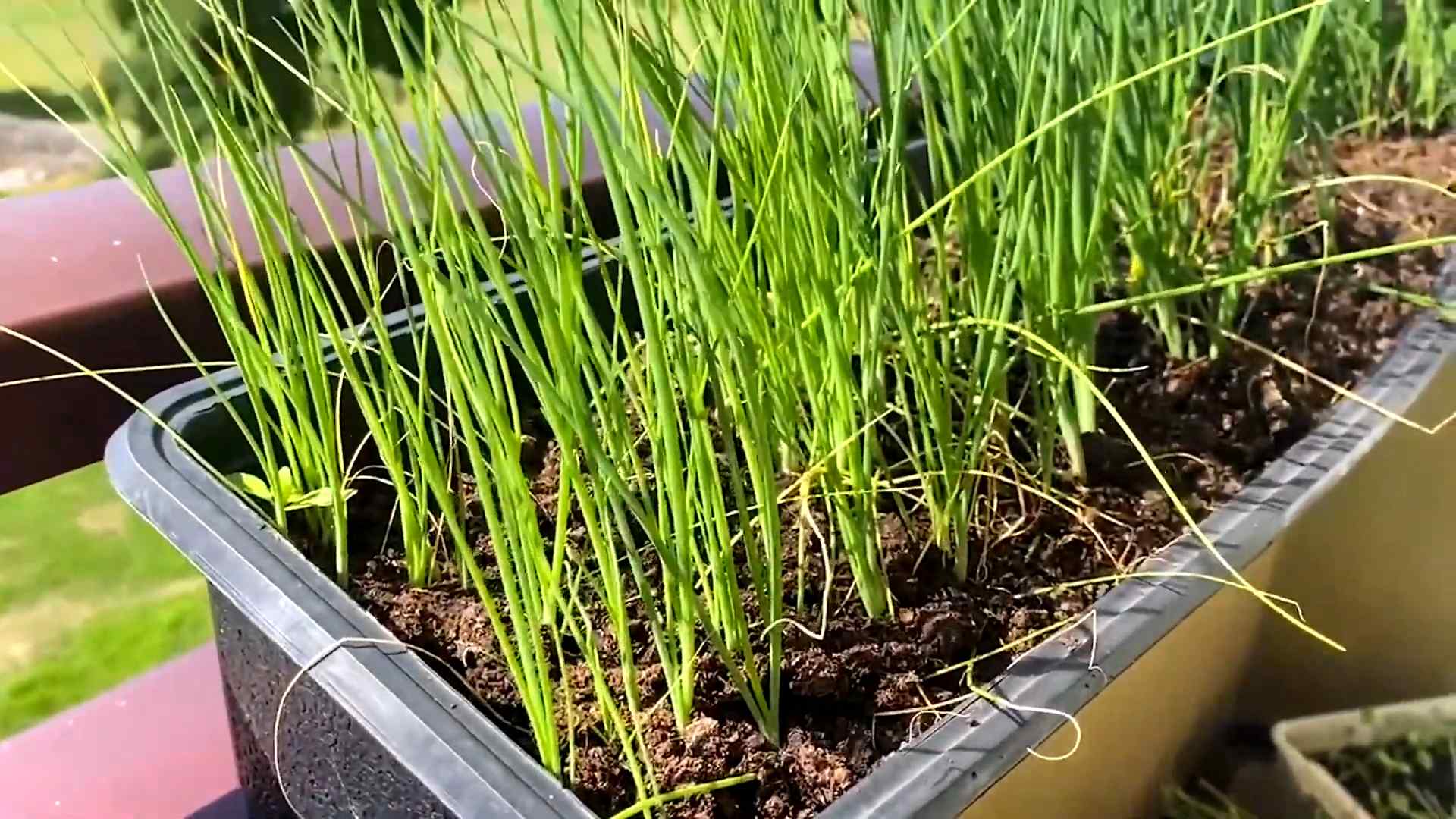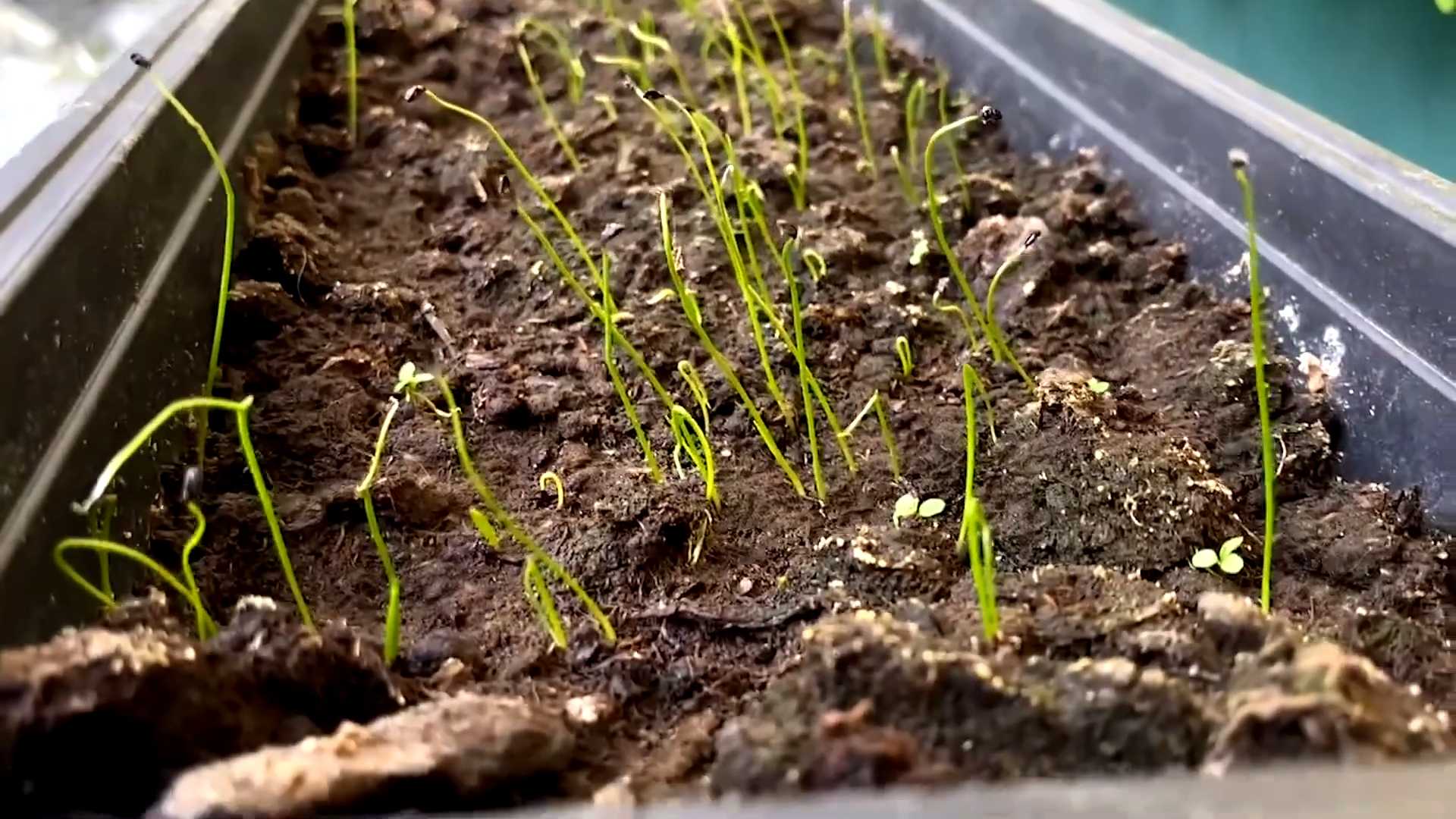Grow chives indoors? Absolutely! Imagine snipping fresh, flavorful chives right from your kitchen windowsill, adding a burst of oniony goodness to your omelets, salads, and soups, even in the dead of winter. No more sad, wilted supermarket herbs – just vibrant, homegrown flavor at your fingertips. For centuries, chives have been a staple in gardens and kitchens worldwide, prized for their culinary versatility and ease of cultivation. From ancient Roman gardens to modern-day balconies, these resilient little plants have proven their worth.
But let’s be honest, not everyone has a sprawling garden or the time to dedicate to extensive outdoor gardening. That’s where this DIY guide comes in! I’m going to show you how incredibly simple it is to grow chives indoors, regardless of your experience level. We’ll cover everything from choosing the right container and soil to providing the perfect light and watering conditions. This isn’t just about having fresh herbs; it’s about bringing a touch of nature into your home, reducing your grocery bill, and experiencing the satisfaction of growing your own food. So, grab your gardening gloves (or don’t – it’s that easy!), and let’s get started!

Growing Chives Indoors: A Beginner’s Guide
Hey there, fellow plant enthusiasts! Ever dreamt of snipping fresh chives right from your kitchen windowsill? Well, dream no more! Growing chives indoors is surprisingly easy and rewarding. I’m going to walk you through everything you need to know to have a thriving chive garden right inside your home. Let’s get started!
What You’ll Need
Before we dive in, let’s gather our supplies. This is a pretty straightforward project, so you probably already have some of these items lying around.
* **Chive Seeds or a Chive Plant:** You can start from seeds, which is more economical, or purchase a small chive plant from a nursery for faster results. I personally love the satisfaction of watching them sprout from seeds!
* **Pot with Drainage Holes:** Drainage is crucial! Choose a pot that’s at least 6 inches in diameter and has drainage holes at the bottom. Terra cotta pots are great because they allow the soil to breathe.
* **Well-Draining Potting Mix:** Don’t use garden soil! It’s too heavy and compacts easily. Opt for a good quality potting mix specifically designed for containers.
* **Watering Can or Spray Bottle:** For gentle watering.
* **Sunny Windowsill or Grow Light:** Chives need plenty of light to thrive.
* **Optional: Seed Starting Tray and Dome:** If you’re starting from seeds, these can help with germination.
* **Optional: Fertilizer:** A balanced liquid fertilizer can give your chives a boost.
Starting from Seeds: A Step-by-Step Guide
If you’re like me and enjoy the process of nurturing a plant from its very beginning, starting from seeds is the way to go! It takes a little longer, but it’s incredibly satisfying.
1. **Prepare Your Seed Starting Tray (Optional):** If you’re using a seed starting tray, fill each cell with your well-draining potting mix. Moisten the soil gently with a spray bottle. You want it damp, not soggy.
2. **Sow the Seeds:** Sprinkle 2-3 chive seeds per cell (or directly into your pot if you’re skipping the tray). Cover the seeds with a very thin layer of potting mix (about 1/4 inch).
3. **Water Gently:** Use a spray bottle to mist the surface of the soil. Avoid overwatering, which can cause the seeds to rot.
4. **Cover with a Dome (Optional):** If you’re using a seed starting tray, cover it with a dome to create a humid environment. This helps with germination.
5. **Place in a Warm Location:** Place the tray or pot in a warm location with indirect sunlight. A temperature of around 70-75°F (21-24°C) is ideal.
6. **Keep the Soil Moist:** Check the soil daily and mist it with water as needed to keep it consistently moist.
7. **Wait for Germination:** Chive seeds typically germinate in 7-14 days. Once the seedlings emerge, remove the dome (if you used one) and move the tray or pot to a sunny windowsill or under a grow light.
8. **Thin the Seedlings (If Necessary):** If multiple seedlings sprout in the same cell or pot, thin them out by snipping off the weaker ones at the soil level. This will give the remaining seedlings more room to grow.
9. **Transplant (If Using a Seed Starting Tray):** Once the seedlings have developed a few sets of true leaves (the leaves that look like miniature chives), they’re ready to be transplanted into their permanent pot. Gently remove the seedlings from the tray and plant them in the pot, spacing them about 2-3 inches apart.
Starting with a Chive Plant: A Quick Start
If you’re short on time or just want to get a head start, buying a chive plant from a nursery is a great option.
1. **Choose a Healthy Plant:** Look for a plant with vibrant green leaves and no signs of pests or diseases.
2. **Prepare Your Pot:** Fill your pot with well-draining potting mix.
3. **Remove the Plant from its Container:** Gently remove the chive plant from its nursery container. If the roots are tightly packed, gently loosen them with your fingers.
4. **Plant the Chives:** Place the chive plant in the pot, making sure the top of the root ball is level with the soil surface.
5. **Water Thoroughly:** Water the plant thoroughly until water drains out of the bottom of the pot.
Caring for Your Indoor Chives
Now that your chives are planted, it’s time to learn how to care for them so they thrive indoors.
1. **Light:** Chives need at least 6-8 hours of sunlight per day. Place your pot on a sunny windowsill that faces south or west. If you don’t have enough natural light, you can supplement with a grow light. I’ve found that a simple LED grow light works wonders.
2. **Watering:** Water your chives when the top inch of soil feels dry to the touch. Avoid overwatering, which can lead to root rot. Make sure the pot has good drainage. I usually water mine about once a week, but it depends on the humidity and temperature in my home.
3. **Fertilizing:** Chives are not heavy feeders, but they will benefit from occasional fertilization. Use a balanced liquid fertilizer diluted to half strength every 2-3 weeks during the growing season (spring and summer).
4. **Temperature:** Chives prefer temperatures between 60-70°F (15-21°C). Avoid placing them near drafts or extreme temperatures.
5. **Humidity:** Chives prefer moderate humidity. If your home is very dry, you can increase the humidity around your plants by placing a tray of water near the pot or using a humidifier.
6. **Pruning:** Regular pruning is essential for keeping your chives healthy and productive. Snip off the tips of the leaves regularly to encourage new growth. You can also remove any yellow or brown leaves.
7. **Pest Control:** Chives are relatively pest-resistant, but they can occasionally be affected by aphids or spider mites. If you notice any pests, you can try spraying them with insecticidal soap or neem oil. I always prefer organic solutions whenever possible.
8. **Repotting:** If your chives become root-bound (the roots are circling around the inside of the pot), you’ll need to repot them into a larger container. Choose a pot that’s 1-2 inches larger in diameter.
Harvesting Your Chives
The best part about growing chives indoors is being able to harvest them whenever you need them!
1. **When to Harvest:** You can start harvesting chives when they are about 6 inches tall.
2. **How to Harvest:** Use scissors or kitchen shears to snip off the leaves near the base of the plant. Avoid cutting off more than one-third of the plant at a time.
3. **Using Your Chives:** Freshly snipped chives are delicious in salads, soups, omelets, and dips. You can also freeze or dry them for later use. I love adding them to my scrambled eggs in the morning!
Troubleshooting
Even with the best care, you might encounter some problems while growing chives indoors. Here are a few common issues and how to fix them:
* **Yellowing Leaves:** This could be caused by overwatering, underwatering, or lack of nutrients. Check the soil moisture and adjust your watering accordingly. If the soil is dry, water thoroughly. If the soil is soggy, allow it to dry out before watering again. You can also try fertilizing your chives with a balanced liquid fertilizer.
* **Leggy Growth:** This is usually caused by insufficient light. Move your chives to a sunnier location or supplement with a grow light.
* **Slow Growth:** This could be caused by a number of factors, including lack of light, nutrients, or water. Make sure your chives are getting enough light, water, and fertilizer.
* **Pests:** Check your chives regularly for pests. If you find any, treat them with insecticidal soap or neem oil.
Dividing Your Chives
After a year or two, your chives may become overcrowded. This is a good time to divide them.
1. **When to Divide:** The best time to divide chives is in the spring or fall.
2. **How to Divide:** Gently remove the chives from their pot. Use your hands or a sharp knife to divide the clump into several smaller clumps.
3. **Replant:** Replant the clumps in separate pots filled with fresh potting mix.
Enjoy Your Homegrown Chives!
Growing chives indoors is a simple and rewarding way to add fresh flavor to your meals. With a little care and attention, you can enjoy a continuous supply of chives right from your kitchen windowsill. Happy gardening!

Conclusion
So, there you have it! Growing chives indoors is not only achievable, but it’s also incredibly rewarding. Imagine having fresh, flavorful chives at your fingertips, ready to elevate your culinary creations any time of year. No more sad, wilted bunches from the grocery store, and no more trekking out to the garden in the pouring rain. This simple DIY trick transforms your kitchen into a miniature herb garden, providing a constant supply of this versatile herb.
Why is this a must-try? Because it’s easy, cost-effective, and adds a touch of green to your indoor space. It’s a project that even the most novice gardener can successfully undertake, and the payoff – fresh, flavorful chives – is well worth the minimal effort. Plus, think of the possibilities! Sprinkle them on baked potatoes, stir them into scrambled eggs, garnish your soups, or add them to your favorite dips. The culinary applications are endless.
Beyond the basic method, there are several variations you can explore. Try planting different varieties of chives, such as garlic chives for a more pungent flavor. Experiment with different types of containers, from repurposed yogurt containers to stylish terracotta pots. You can even create a tiered herb garden for a visually appealing and space-saving display. Consider using grow lights if you have limited natural light, ensuring your chives receive the optimal amount of sunshine. Another variation is to start chives from seed indoors, giving you even more control over the process. This is a great option if you want to grow a specific variety that isn’t readily available as a transplant.
This DIY method for growing chives indoors is a game-changer for any home cook. It’s a sustainable way to add fresh flavor to your meals, reduce food waste, and enjoy the satisfaction of growing your own herbs.
We wholeheartedly encourage you to give this DIY trick a try. It’s a simple project that yields delicious results. Once you’ve experienced the joy of harvesting your own fresh chives, you’ll wonder why you didn’t start sooner.
Don’t be afraid to experiment and find what works best for you and your growing environment. Remember to provide adequate drainage, water regularly, and give your chives plenty of light. With a little care and attention, you’ll be enjoying a bountiful harvest in no time.
And most importantly, we want to hear about your experience! Share your tips, tricks, and photos with us in the comments below. Let us know what challenges you faced, what successes you celebrated, and what delicious dishes you created with your homegrown chives. Your feedback will help other readers learn and grow, and together, we can create a community of indoor herb gardeners. So, grab your pots, soil, and chive seeds, and get ready to embark on a flavorful adventure! Let’s start growing chives indoors together!
Frequently Asked Questions (FAQ)
What kind of soil should I use for growing chives indoors?
The best soil for growing chives indoors is a well-draining potting mix. Avoid using garden soil, as it can be too heavy and may not drain properly, leading to root rot. Look for a potting mix that contains ingredients like peat moss, perlite, and vermiculite. These ingredients help to improve drainage and aeration, creating a healthy environment for your chives to thrive. You can also amend your potting mix with compost to provide additional nutrients. A slightly acidic to neutral pH (around 6.0 to 7.0) is ideal for chives.
How much sunlight do indoor chives need?
Chives need at least 6 hours of sunlight per day to grow well indoors. A south-facing window is usually the best option, as it provides the most direct sunlight. If you don’t have a south-facing window, an east- or west-facing window can also work, but you may need to supplement with artificial light. If your chives aren’t getting enough sunlight, they may become leggy and pale. Consider using a grow light to provide additional light, especially during the winter months. LED grow lights are a great option, as they are energy-efficient and don’t produce excessive heat.
How often should I water my indoor chives?
Water your chives regularly, keeping the soil consistently moist but not waterlogged. Check the soil moisture by sticking your finger about an inch into the soil. If it feels dry, it’s time to water. Water deeply, allowing the excess water to drain out of the bottom of the pot. Avoid overwatering, as this can lead to root rot. During the winter months, when the plants are not actively growing, you may need to water less frequently.
How do I harvest chives from my indoor plant?
Harvesting chives is easy! Simply snip off the leaves with scissors, about an inch above the soil line. Avoid cutting off more than one-third of the plant at a time, as this can stress the plant. Regular harvesting will encourage the plant to produce more leaves. You can harvest chives as needed, whenever you want to add them to your dishes.
Can I grow chives from seed indoors?
Yes, you can absolutely grow chives from seed indoors. Start by sowing the seeds in a seed-starting tray or small pots filled with seed-starting mix. Keep the soil moist and warm (around 70-75°F). The seeds should germinate in about 7-14 days. Once the seedlings have developed a few sets of true leaves, you can transplant them into larger pots.
My chives are turning yellow. What’s wrong?
Yellowing chives can be a sign of several problems. Overwatering is a common cause, as it can lead to root rot. Make sure your pot has good drainage and that you’re not watering too frequently. Underwatering can also cause yellowing, so check the soil moisture regularly. Nutrient deficiencies can also be a culprit. Try fertilizing your chives with a balanced liquid fertilizer. Finally, insufficient sunlight can also cause yellowing. Make sure your chives are getting at least 6 hours of sunlight per day.
Can I fertilize my indoor chives?
Yes, fertilizing your indoor chives can help them grow strong and healthy. Use a balanced liquid fertilizer, diluted to half strength. Fertilize every 2-4 weeks during the growing season (spring and summer). Avoid fertilizing during the winter months, when the plants are not actively growing.
How do I prevent pests from attacking my indoor chives?
While indoor plants are generally less susceptible to pests than outdoor plants, they can still be affected. Common pests that may attack chives include aphids, spider mites, and fungus gnats. To prevent pests, inspect your plants regularly for any signs of infestation. If you find pests, you can try washing them off with a strong stream of water. You can also use insecticidal soap or neem oil to control pests. Avoid using harsh chemicals, as these can damage your plants.
How long will my indoor chive plant last?
With proper care, your indoor chive plant can last for several years. Chives are perennial plants, meaning they can live for more than two years. To keep your chives healthy and productive, repot them every year or two into a larger pot with fresh potting mix. You can also divide the plant if it becomes too crowded.
Can I freeze chives for later use?
Yes, freezing chives is a great way to preserve them for later use. Simply chop the chives and place them in a freezer bag or container. You can also freeze them in ice cube trays with water or olive oil. Frozen chives will retain their flavor and aroma for several months.





Leave a Comment